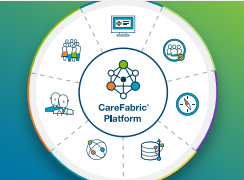This week is Eating Disorders Awareness Week. To help call attention to this important problem, this blog will provide an overview of eating disorders in general and focus on one common type of related disorder.
Eating disorders (EDs) are a growing concern for human services providers and communities – according to a recent study, lifetime prevalence of EDs rose from 3.5% in 2000 – 2006 to 7.8% in 2013-2018. In today’s internet and social media focused world, it is no surprise that a study originally published in the Journal of the Academy of Nutrition and Dietetics by Sidani et al. found “strong and consistent association between social media use and eating concern.”
Consider the following from The National Eating Disorders Association (NEDA):
- Six-year-old girls begin expressing concerns about their weight and shape
- 40-60% of girls ages 6-12 are concerned about their weight or about becoming too fat
- More than 50% of teenage girls and 30% of teenage boys try to control their weight by unhealthy means such as avoiding meals, fasting, smoking, purging and taking laxatives
While there is no single cause of eating disorders, research indicates that body dissatisfaction is the best-known contributor to the development of anorexia nervosa and bulimia nervosa. https://www.nationaleatingdisorders.org/body-image-eating-disorders
When we think of eating disorders, anorexia, bulimia and Binge-Eating Disorder (BED) most often come to mind. They are serious and devastating problems, yet they are not the only eating-related disorders identified in the Diagnostic and Statistical Manual of Mental Illnesses – Fifth Edition (DSM-5). Also identified is Avoidant/Restrictive Food Intake Disorder (ARFID), Pica, Rumination Disorder, and Other Specified Feeding or Eating Disorder (OSFED).
There is one diagnosis in the DSM-5 that is not found in the Eating Disorders section. It is instead categorized under Obsessive Compulsive Disorders (OCD) and it is called Body Dysmorphic Disorder (BDD). According to the National Association of Anorexia Nervosa and Associated Disorders (ANAD), BDD is an obsession with an imaginary defect in physical appearance or an extreme concern with a slight physical blemish, which others may not even see. People struggling with body dysmorphic disorder have inaccurate perceptions of their body and often specific body parts, such as the hair, skin and nose.
BDD has two major subtypes: Muscle Dysmorphia and BDD by Proxy. Muscle dysmorphia is diagnosed when individuals are preoccupied with body composition, specifically the belief that their body build is too small or insufficiently muscular. Most people suffering from muscle dysmorphia are males. It is not uncommon for people suffering from this to be preoccupied with other body parts. However, quality of life is lower and risk of suicide and substance use (including anabolic steroids) is higher for people with muscle dysphoria than with other forms of BDD.
BDD by Proxy is characterized by the same preoccupations and compulsions as in other forms of BDD except they focus on a perceived flaw in another person. But both types are characterized by the distorted body image that often accompanies a traditional eating disorder.
Not everyone who is concerned about their bodily appearance or who goes to a gym has muscle dysmorphia. A 2021 study by Mitchison et al estimated 2.2% of male and 1.4% of female adolescents experienced muscle dysmorphia. For some, mostly males, it has become known colloquially as “bigorexia” i.e. the compulsion to become physically bigger and stronger. But like many areas of mental health, the differentiating factor between a personal habit and a diagnosable mental illness has to do with the degree to which the activity in question interferes with one’s life. The DSM-5 explains it this way:
Body dysmorphic disorder differs from normal appearance concerns in being characterized by excessive appearance-related preoccupations and repetitive behaviors that are time-consuming and usually difficult to resist or control, and cause clinically significant distress or impairment in functioning (pp245-246).
One of the hallmarks of this disorder, and the reason it is categorized with Obsessive Compulsive Disorder, is that the individual thinks about the perceived flaw at least an hour per day (the average is 3 to 8 hours per day). In addition to being preoccupied with the perceived flaw, the person must perform repetitive, compulsive behaviors such as checking themselves in a mirror, excessive grooming or skin picking (for dermatological preoccupations).
Arguably one of the most clinically worrisome aspects of BDD is the person’s belief that the flaws they see are real. Their perceptions are not minimized by rational arguments or objective evidence. If this sounds like a delusion, that’s because it is – or can be. Assessing the insight of people with BDD is an important part of the therapeutic process. Insight is the degree to which someone can see reality, as opposed to having delusional beliefs. Unfortunately, 75% of people with BDD have no insight (i.e. they hold delusional beliefs) or poor insight. This is a diagnostic differentiator between BDD and other forms of OCD, since fewer than 5% of people with OCD have delusional beliefs and the majority have good or excellent insight. While BDD differs from other forms of OCD in this way, body negativity up to and including delusional thoughts about one’s body is a core element in several of the most common eating disorders.
People with BDD frequently also suffer from some form of eating disorder. In the International Journal of Eating Disorders, Ruffolo et al. found that 32.5% of individuals with BDD had a comorbid lifetime eating disorder. When taken together, anorexia, bulimia, binge eating disorder, avoidant/restrictive food intake disorder, pica, rumination disorder, other specified feeding or eating disorder and body dysmorphic disorder affect about 9% of the US population. BDD alone affects 2.4% compared to 0.6% for anorexia, 0.3% for bulimia and 1.2% for binge eating. So, while BDD is not classified with the other eating disorders in the DSM-5, organizations like ANAD and NEDA consider it at least an enabler.
As we enter this week of awareness and better understanding of eating disorders, it’s important for us to realize that eating disorders are often associated with other behavioral health challenges. Whether an individual has an eating disorder, body dysmorphic disorder, or a combination, with the right therapeutic supports the path to recovery is promising.





